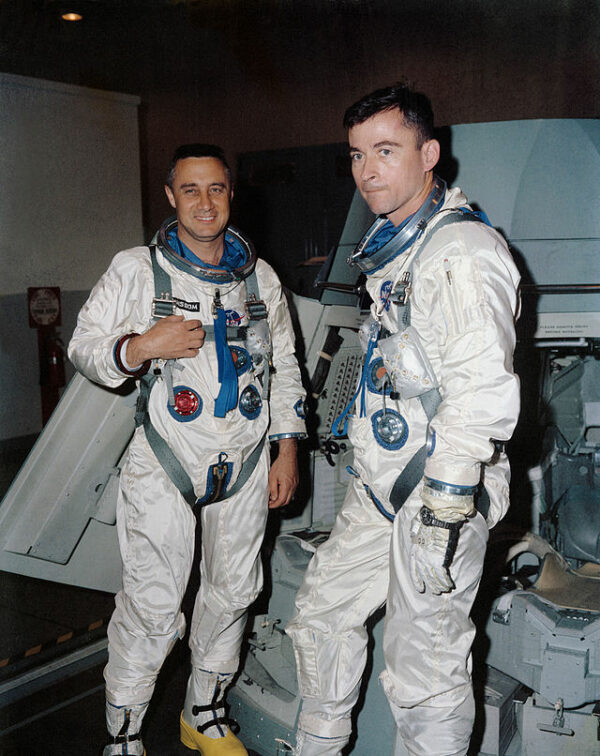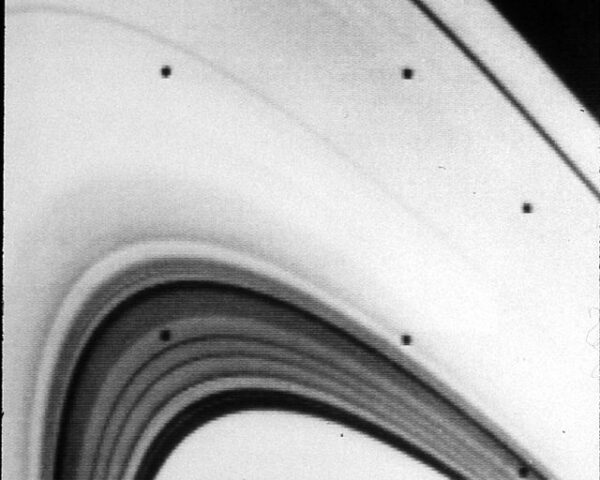In the 1960s, the United States and Russia were in a space race and NASA launched the Gemini program to bridge the work between the Mercury and Apollo programs. The goal of the program was to test equipment and mission procedures in Earth’s orbit and to train astronauts and ground crews for future missions to the Moon.
NASA wanted to see what happened during long duration flights and test the rendezvous and docking of two vehicles in Earth orbit. The space agency writes, “Each Gemini mission carried two astronauts into Earth orbit for periods ranging from 5 hours to 14 days. The program consisted of 10 crewed launches, 2 uncrewed launches, and 7 target vehicles.”
On March 23, 1965, one of Gemini’s most important missions took flight. Command pilot Virgil I. “Gus” Grissom and pilot John Young made space history when they “were launched from Cape Kennedy atop a Titan II launch vehicle.”
The Air and Space Museum noted that “because Grissom’s Mercury spacecraft, Liberty Bell 7, had sunk at the end of his 1961 suborbital mission, he unofficially named Gemini 3 for the “Unsinkable Molly Brown” of Broadway musical fame. The crew successfully completed the planned 3-orbit mission in just under 5 hours. Their primary objectives were to test the basic systems of the Gemini spacecraft and make the first orbit-changing maneuvers in space.”
You can watch the full mission on Youtube:
Both astronauts became legends of the space program.
Thirty-eight years old at the time, Grissom was born on April 3, 1926, in the small town Indiana town of Mitchell. One biography notes, “in April 1959 he was selected as one of the original Mercury 7 astronauts. He was the second American to fly in space in a 15 minute sub-orbital flight in the Mercury Project. He nearly drowned when the hatch blew off his spacecraft after landing, and he had to swim for his life. The rescue team were busy trying to salvage the spacecraft before it sank, and ignored the frantically waving, sinking astronaut; luckily he was rescued in the nick of time by a helicopter that spotted his predicament. This Gemini flight made him the first astronaut to fly in space twice. He logged more than 4,600 flying time, 3500 of them in jets. He was tragically killed in the Apollo 1 fire on 27 January 1967.”
In 1962, John Young was “selected as a member of NASA Astronaut Group 2. He flew on the first crewed Gemini mission (Gemini 3) in 1965, and then commanded the 1966 Gemini 10 mission. In 1969, he flew as the command module pilot on Apollo 10. In 1972, he commanded Apollo 16 and spent three days on the lunar surface exploring the Descartes Highlands with Charles Duke. Young also commanded STS-1 in 1981, the Space Shuttle program’s first launch, and STS-9 in 1983, both of which were on Columbia. He was one of only two astronauts, along with Ken Mattingly, his command module pilot during the Apollo 16 mission, to fly on both an Apollo mission and a Space Shuttle mission, and the only astronaut to walk on the moon and fly on the Space Shuttle. Young served as Chief of the Astronaut Office from 1974 to 1987, and retired from NASA in 2004, after 42 years of service.
From Gemini III he went on to the longest career of any astronaut, with two Gemini missions, twice to the Moon in Apollo and two Shuttle flights. He was Chief of the Astronaut Office from 1974 to 1987. He retired from NASA in December 2004. Young has logged more than 15,000 hours flying time in props, jets, helicopters, rocket jets, and his six space flights totaled 835 hours.”






